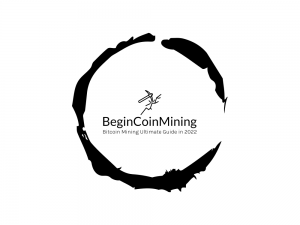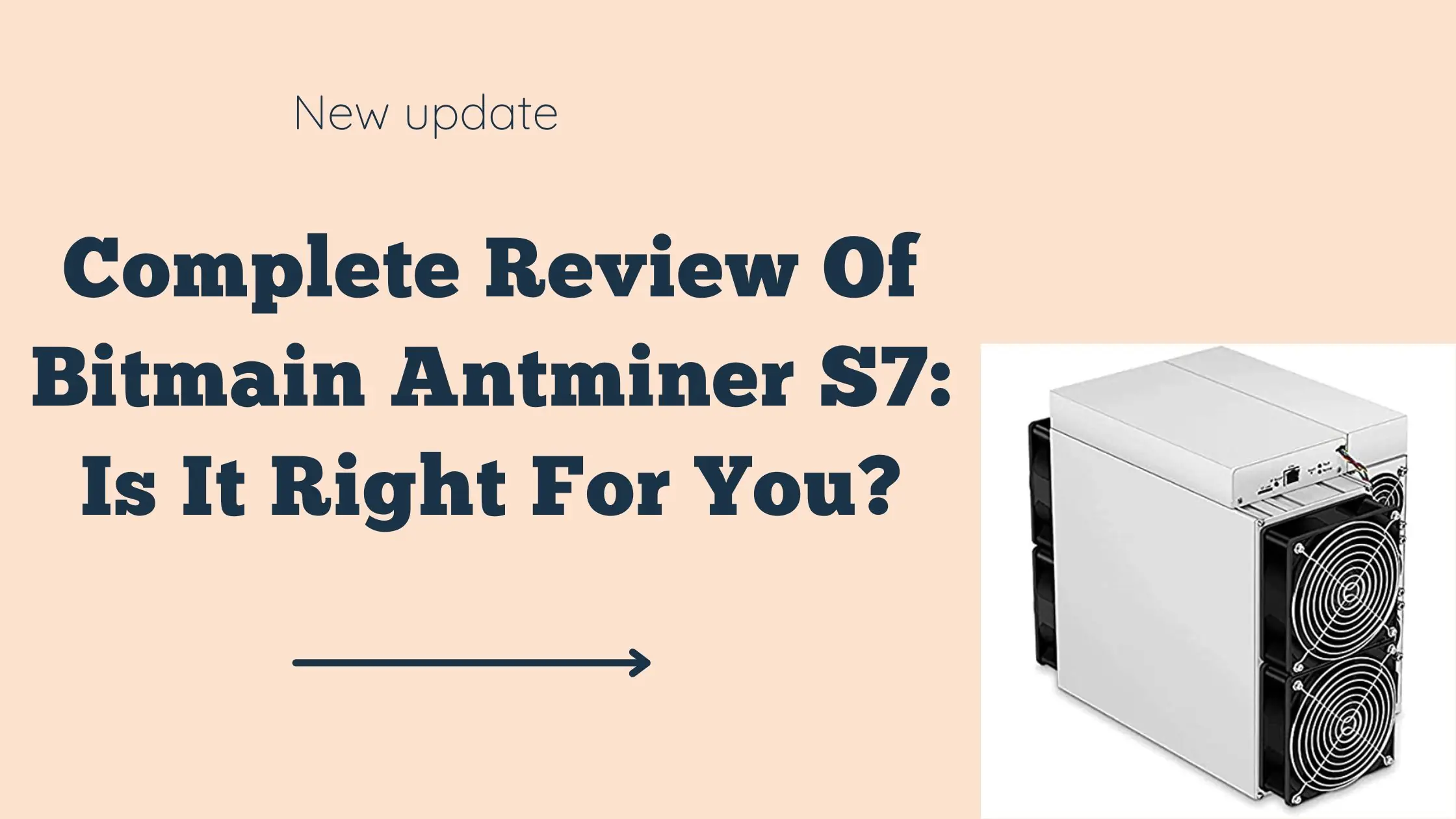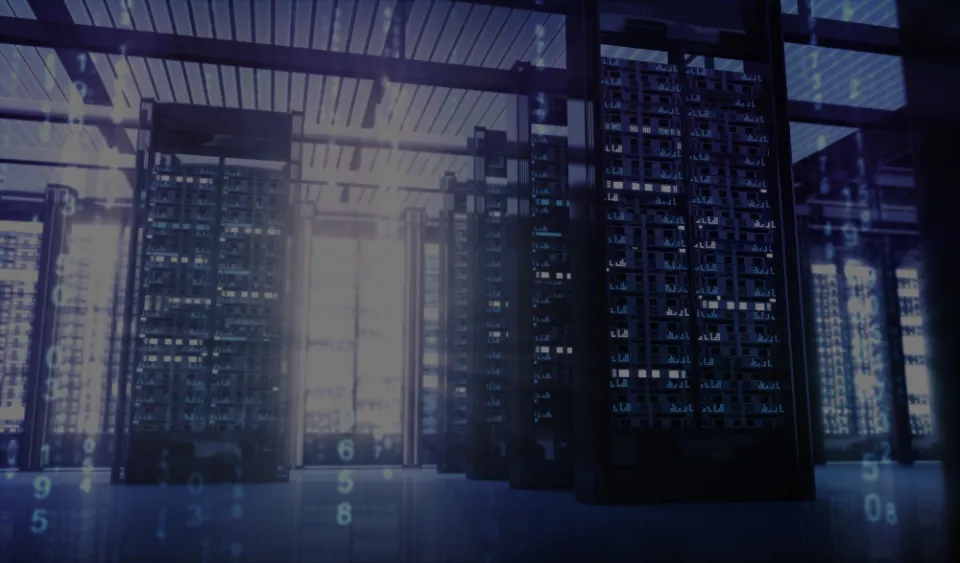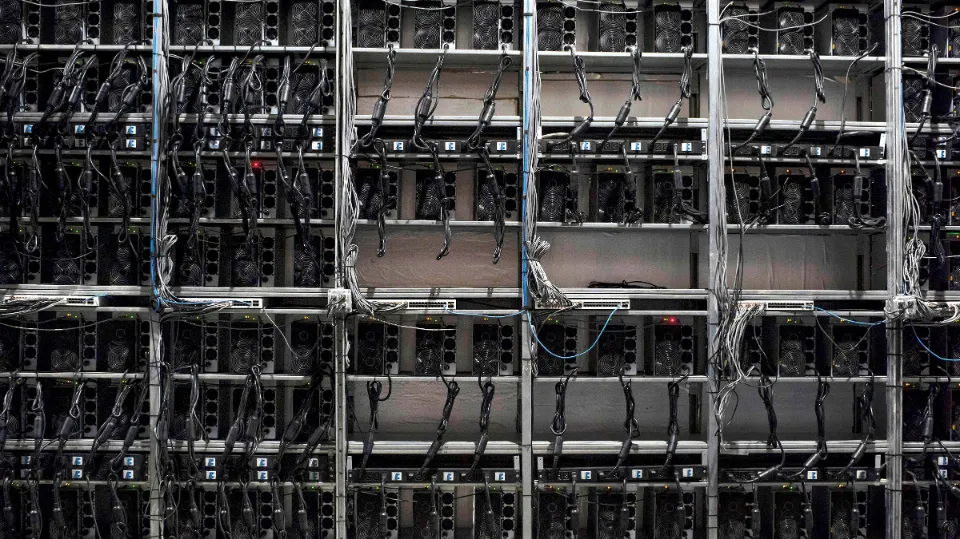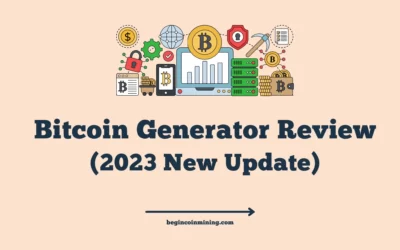Recently, Bitmain unveiled the Antminer S7 specifications using their brand-new BM1385 ASIC. This is a significant step because the S7 is now available to everyone worldwide, from small home miners to huge data centers.
A 1000W Enermax PSU with an efficiency rate of over 80% is included with the S7. Even when the S7-LN is operating above its default 600M frequency, the PSU has excess capacity because the device only consumes about 700W.
The Antminer S7 is Bitmain’s most well-known ASIC Bitcoin miner, and it is the first and currently best manufacturer of mining hardware for those who are interested in mining Bitcoin. The principles underlying this mining device and how to use it are covered in the remaining sections of this article.
Antminer S7 Specifications:
| Hash Rate | 4.86 TH/s |
| Power Consumption | 1210 W (at the wall, with APW3, 93% efficiency, 25C ambient temp) |
| Power Efficiency | 0.25 J/GH (at the wall, with APW3, 93% efficiency, 25°C ambient temp) |
| Rated Voltage | 12.0V+5%, should not be less than 12.0V |
| Chips per unit | 162x BM1385 |
| Dimensions | 301mm(L)123mm(W)155mm(H) |
| Cooling | 2x 120mm fan |
| Weight | 4kg |
| Operating Temperature | 0 °C to 40 °C |
| Network Connection | Ethernet |
The S7 arrived quickly and undamaged. With a dual push-pull fan system, the Antminer S7 is robustly constructed. The S7 is similar in size to the S5 and offers a lot of power in a compact design. The housing features a new twist in that three of them can be connected to each other at the sides using a tongue and groove system. I say three of them because each controller is equipped to run three S7s simultaneously. There will be several different ways to deploy them with this stacking option. Since we currently only have one S7, we were unable to test how many at once the controller will operate. Even if you don’t use one controller for multiple units, being able to stack them together is still a benefit. Your racks and shelving may feature more secure configurations as a result.
Pros and Cons of Antminer S7
The AntMiner S7: Bitcoin Mining Mainstay
Since its release in mid-2015, Bitmain’s AntMiner S7 has been so popular that it is now on its 19th batch of production. The S7 is thought to have dominated the market for a good reason because it offers a high hash rate for the amount of power it uses. Racks of AntMiner S7s are likely to be seen hashing away in any modern industrial mining operation. The S7 has a reasonable price and strong performance, making it a popular choice among hobbyist miners as well.
An ASIC 28nm BM1385 chip powers the S7. 135 of these chips are dispersed across 3 boards and are kept cool by dual fans (or a single fan depending on a particular batch). The sturdy metal casing has a tongue and groove system that enables the orderly arrangement of numerous miners.
Power Supply of Antminer S7
Bitmain’s high caliber 1600 Watt APW3 power supply unit is suggested for use with the S7 because it was created especially for use with Bitcoin miners. This PSU is deemed to be very efficient because it loses only 7% of the electricity between the outlet and the miner. The APW3 needs at least 205 Volts to operate but regrettably does not come with the required 16A power cord.
The APW3 is a great option for future upgradeability because it also works with the power-hungry AntMiner S9, even though it costs $140 excluding shipping. Any ATX PSU with enough Wattage to power the S7 can also be used.
A 1000W Enermax PSU that is rated Gold (above 80% efficiency) comes with the S7-LN. Even when overclocked above its default 600M frequency, the S7-LN only consumes about 700W, so this PSU has spare capacity. It raises the cost of shipping by substantially increasing the unit’s weight. Although a miner with an integrated PSU is small and convenient, there aren’t many other benefits to such a setup. A cord is also absent from the S7-LN.
Bitcoins / Month (Profitability) of Antminer S7
Profitability for the S7 is coming to an end for those without access to cheap power as the difficulty is increasing and block rewards are about to be halved. On the other hand, if Bitcoin’s exchange rate rises sufficiently, the profitability of S7 might last longer than expected.
We’ll look at some likely returns for an S7 and an S7-LN using the CoinWarz Bitcoin mining calculator. Supposing an average household Power Cost of 15c per kWh, a Pool Fee of 2.5% (as charged by AntPool), and a post-halving Block Reward of 12.5 BTC per block mined:
Make your own custom calculation for significantly improved accuracy.
The result doesn’t look good:
The loss is $18 per month and $223 per year.
This rough calculation (which appears to not account for the Hardware Costs field) makes it abundantly clear that no one who pays a regular electricity rate will become wealthy off an S7. Even at 15c power, with careful adjustments, it might be possible to make money with an S7. taking only if the price of Bitcoin doesn’t drop and the difficulty doesn’t increase, both of which are extremely risky presumptions.
The same calculations adjusted for the Hash Rate and Power consumption of the S7-LN produce slightly more encouraging results:
Only $6 per month and $77 a year are lost.
Power Consumption of Antminer S7
The S7 consumes a minimum of 1293 Watts at a temperature of 25°C (77°F). The fan(s) will use more energy to cool the unit, obviously, the hotter the environment. The S7 uses a negligible 0.25 Joules of power per Gigahash and is twice as effective as the S5 at converting all this energy into bitcoins.
As mentioned, the LN (“Lite”) version draws only 700W. It also uses 0.25 J/GH.

Price of Antminer S7
The S7 was initially priced at almost $2000, making it slightly less expensive than the S9 is currently. The cost has abruptly dropped to $440 only (when in stock), plus shipping, and is currently available from Bitmain. However, it may cost $545 when purchased brand-new or $500 when purchased used from Amazon.
While it costs $439 new or $409 used on Amazon, S7-LN is available from Bitmain for $291.
These prices are likely to decrease further as the S9 and other top-notch mining equipment become the new norm. Additionally, S7(-LNs) that have been modified can be purchased with increased efficiency, reduced noise, and reduced heat.
Setup of Antminer S7
Due to the DHCP capability of both S7s, they will proactively look for an IP address to use. Setting them up using the MinerLink GUI is easy, and you only need your mining pool credentials to start mining. The units will automatically start hashing as soon as they are powered on, which is helpful in the event of a power outage. S7 connectivity is limited to Ethernet.
Working Temperature of Antminer S7
Both S7 versions can operate at temperatures well below 40°C or 77°C. Each is kept cool by two 12038 fans. It ought to be stored in a room with a cool, dry environment to help these miners live longer. For instance, a dry basement would be an ideal location.
Profitability of Antminer S7
Every miner needs to be aware of this factor. Since running a miner rig is expensive, it makes sense that you’d want to see a good return on your investment. Unfortunately, there won’t be any gains if you use the S7 with the regular energy that you intend to purchase.
However, the S7 can be a good option for you and might even pay for itself and become profitable after some time if you have a discounted electricity payment rate or know somewhere where you can mine using free power.

How to Mine BTC Using Bitmain Antminer S7?
One of Bitmain’s top miners, the Antminer S7 is significantly more effective than its predecessor, the Antminer S5. Antminer’s BM1385 chips and four times higher hash rate are largely responsible for its S7 efficiency. The Antminer S7’s ability to operate independently, without the need for an external controller, is one of its best features; however, it is important to note that it does not include a power outlet of its own. The hash rate, size, and power consumption of Antminer’s processing node are 28 nm, 4,860 GH, and 1,300 W respectively.
You will require a power source in order to begin mining with the Antminer S7. As we previously stated, the Antminer S7 does not come with a power supply outlet, so you will need to purchase one on your own, such as the Bitmain Power Supply APW3. In essence, you require a high-end PSU computer device with 10xPCI-E power connectors with 6 pins. The three hashing boards must be connected to each other with three PCI-E connectors, and the final board must be connected to the controller. All ten PCI-E connectors are necessary. Because there isn’t a motherboard for this, you also need to be aware that the PSU must always be on.
The next step after getting a power supply is to wire and configure the hardware.
Wiring
Follow these three steps:
• Get the paper clip for the 24-pin connector of the PSU ready;
• Connect the ten PCI-E cables to the Antminer;
• Connect the Antminer S7 to the router using an ethernet cable.
Configuration
Same as above, perform the following steps:
• First, use the switch at the back of the power supply in order to turn it on;
• Next, check if the DHCP table of your router is turned on;
• Use a web browser to navigate the router and find the IP address that the router has assigned to your Antminer S7 and go to that IP address;
• Now you’ll have to sign in using “root” for both password and username;
• Select Miner Configuration from the Status page. Insert the data of your mining pool (you can use Bitmain’s mining pool Antpool), in the following format:
stratum+tcp://mint.bitminter.com:3333
stratum+tcp://us1.ghash.io:3333
stratum+tcp://stratum.mining.eligius.st:3334;
• Check if the mining process has begun by going to the page Miner Status, and you’re good to go.
Final Verdict: is the S7 Right for You?
If you want to turn a profit but can’t wait for the S9 (or other upcoming miners from different companies) to become reasonably priced, the S7 is probably your best bet. It’s possible that the S7 will pay for itself and turn a profit if it has access to cheap power and undergoes some clever modifications.
For the home miner who can’t stand a lot of fan noise or cable clutter, a slightly more efficient S7-LN is unquestionably appropriate.
FAQ
What is the Hashrate of Antminer S7?
AntMiner S7 Triple Blade Miner from BitmainTech Ltd. with a nominal hash rate of ~ 4.73 TH/s.
Is Antminer Worth Buying?
Conclusion: The Antminer S17 and Antminer S17 Pro are both excellent options for professional miners, especially if purchased directly from the manufacturer. Given the current mining environment, its efficiency should be sufficient to generate respectable returns.
How Long Will An Antminer Last?
A well-kept, well-maintained machine can last for an average of three to five years.
